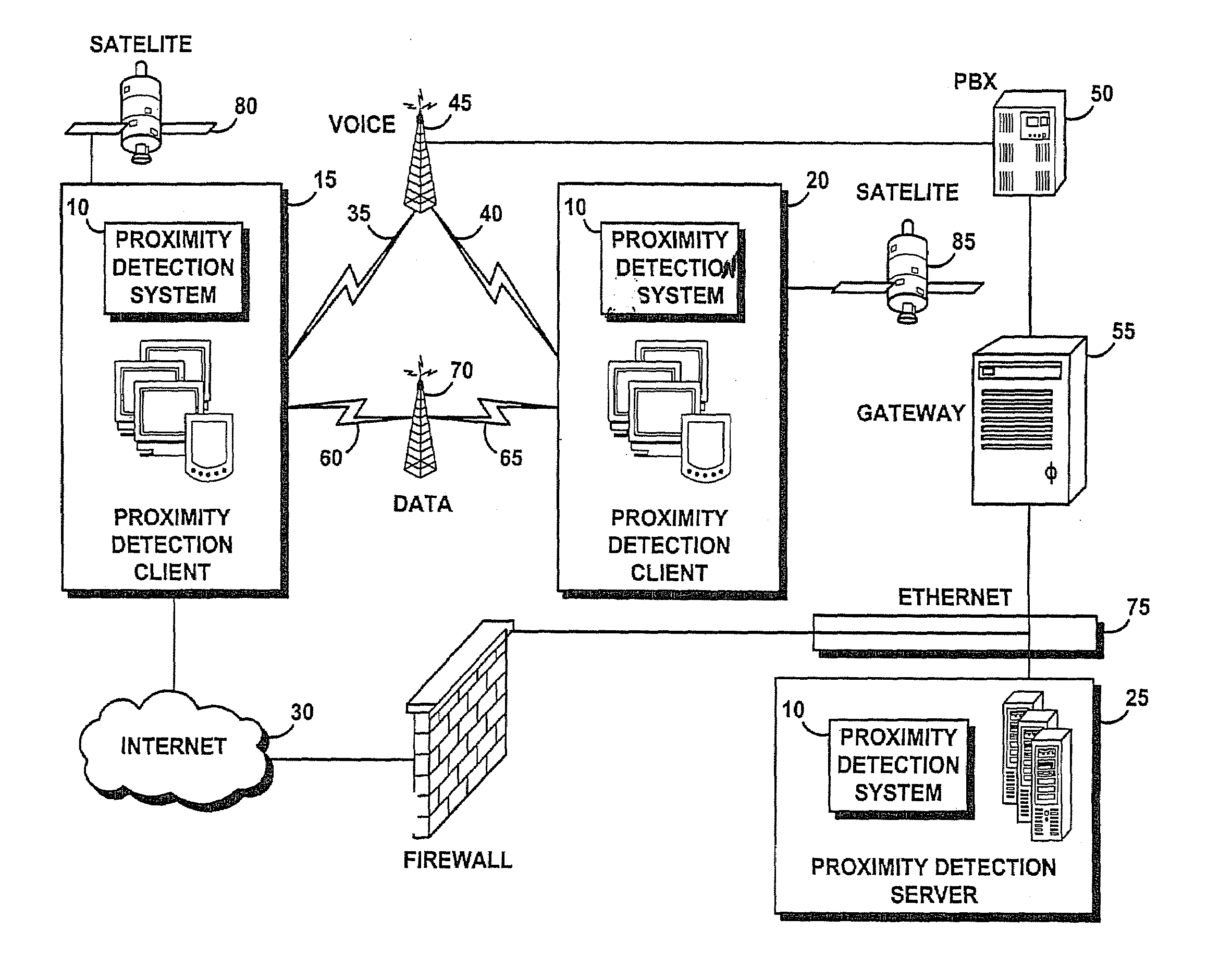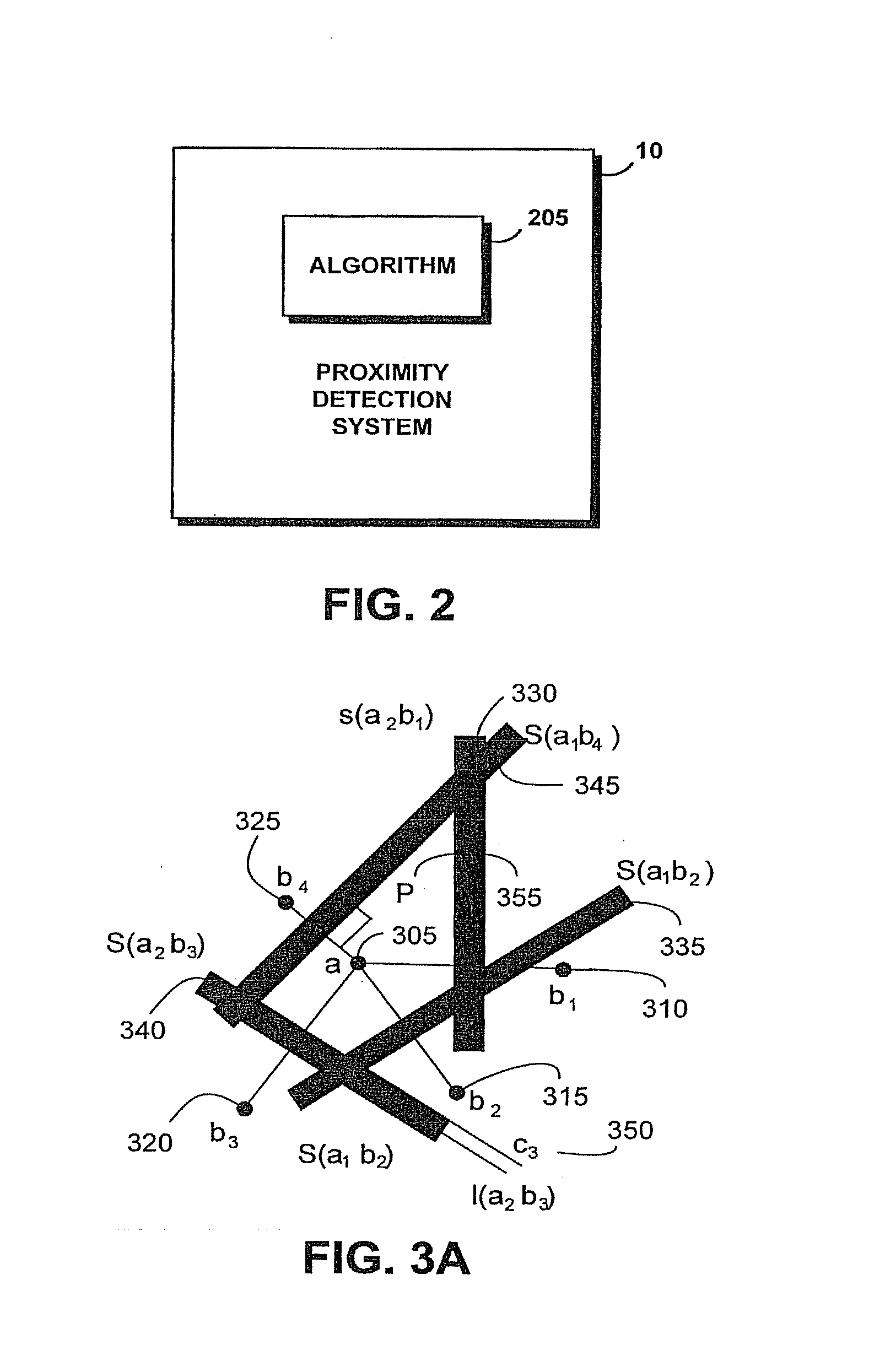System and method for detecting proximity between mobile device users
a mobile device and proximity detection technology, applied in the field of location-dependent data processing, can solve problems such as invalidation of agreements, and achieve the effects of reducing communication complexity, maximizing expected time, and reducing the required “air time”
- Summary
- Abstract
- Description
- Claims
- Application Information
AI Technical Summary
Benefits of technology
Problems solved by technology
Method used
Image
Examples
Embodiment Construction
[0036]FIG. 1 portrays an exemplary overall environment in which a system 10 and associated methods for detecting proximity between mobile device users according to the present invention may be used. System 10 includes a software programming code or computer program product that is typically embedded within, or installed on a PDA or other wireless handheld device, cell phones, etc. as represented by proximity detection clients 15, 20. The function performed by system 10 can also be implemented in a server-side system such as proximity detection server 25. Alternatively, system 10 can be saved on a suitable storage medium such as a diskette, a CD, a hard drive, or like devices.
[0037]The proximity detection client 15, 20 communicates with other computers or networks of computers through various paths: the Internet 30; wireless communication as represented by voice transmission 35, 40 through antenna 45, PBX 50, and gateway 55; or data transmission 60, 65 through antenna 70 and the Inte...
PUM
 Login to View More
Login to View More Abstract
Description
Claims
Application Information
 Login to View More
Login to View More - R&D
- Intellectual Property
- Life Sciences
- Materials
- Tech Scout
- Unparalleled Data Quality
- Higher Quality Content
- 60% Fewer Hallucinations
Browse by: Latest US Patents, China's latest patents, Technical Efficacy Thesaurus, Application Domain, Technology Topic, Popular Technical Reports.
© 2025 PatSnap. All rights reserved.Legal|Privacy policy|Modern Slavery Act Transparency Statement|Sitemap|About US| Contact US: help@patsnap.com



